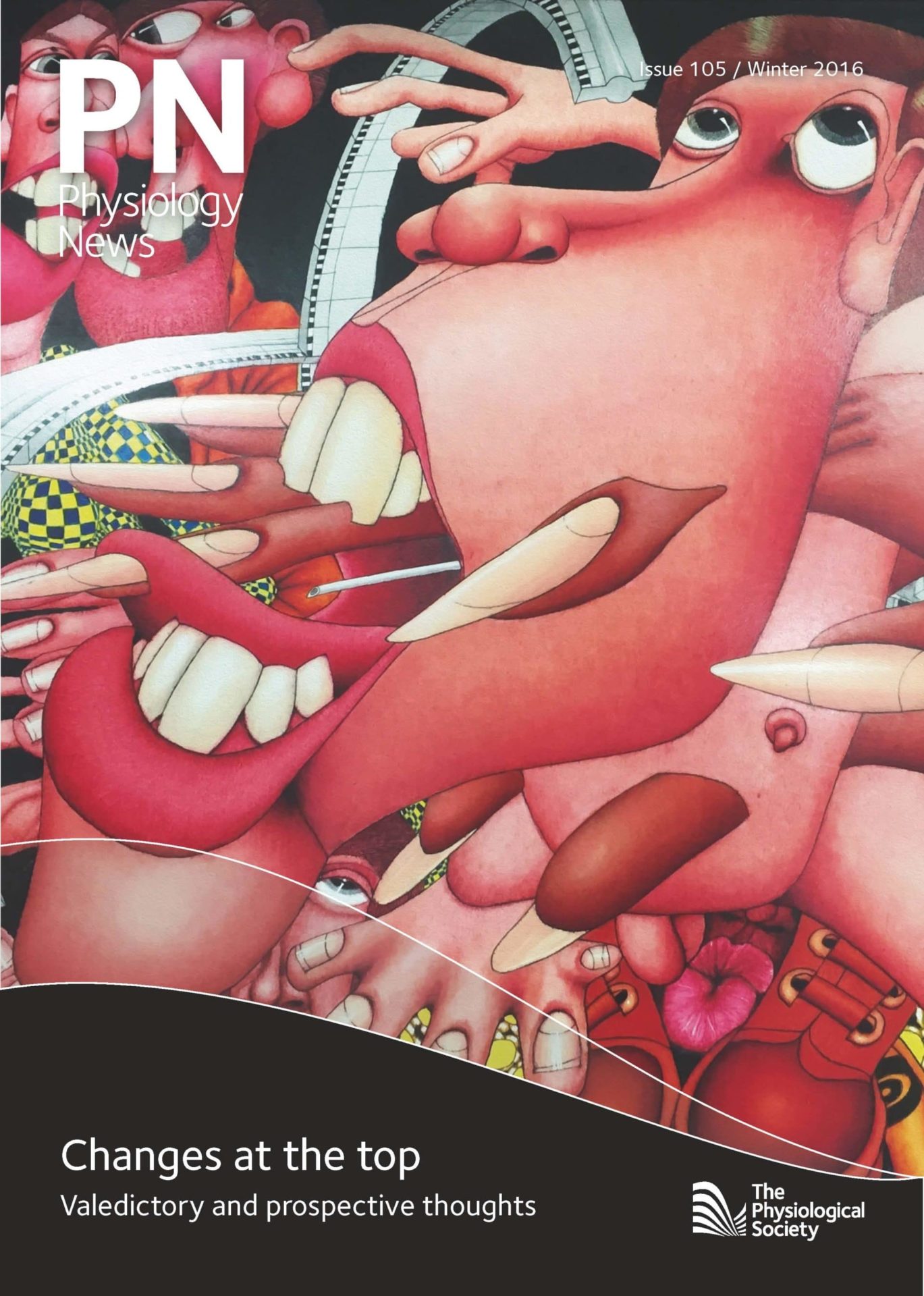
Physiology News Magazine
The inaugural H3 Bayliss Starling Symposium: Novel Approaches to Hormone Sensing
14 September 2016, Hodgkin-Huxley House, London, UK
Events
The inaugural H3 Bayliss Starling Symposium: Novel Approaches to Hormone Sensing
14 September 2016, Hodgkin-Huxley House, London, UK
Events
Timothy Wells
Cardiff University
https://doi.org/10.36866/pn.105.17a
Since Bayliss and Starling’s initial discovery of secretin more than a century ago, the number of hormones identified in humans has risen to more than seventy. This success has been achieved by quantifying hormones using antibody-based approaches in plasma or serum, but processing blood samples in this way limits our understanding of the more dynamic processes of hormone secretion. To address the challenge of developing the device on every endocrinologists’ wish list – a sensor to measure hormones in vivo – the Physiological Society held the Inaugural H3 Bayliss Starling Symposium on Novel Approaches to Hormone Sensing at Hodgkin Huxley House on 14 September.
Organised by Drs Tim Wells (Cardiff University) and Paul Le Tissier (Edinburgh University), this symposium brought together endocrinologists, protein chemists, physicists and engineers and representatives from the UK-based funding bodies to explore novel approaches to real-time hormone sensing. Delegates from a range of academic and commercial backgrounds were treated to presentations on the significance of hormone dynamics, hormone-receptor interactions, light-based biosensing and electrochemical biosensing.
With such a wide range of expertise on show, the day proved to be mind-stretching and the discussion sessions lively and incisive. Among the experts to address the meeting, Frank Vollmer (Max Plank Institute for Light, Germany) commented that ‘The H3 symposium was a great success. The discussions opened my eyes to the powerful applications that will be enabled by emerging optical biosensor technology. I left London with a notebook full of exciting new ideas and contacts for collaborations. I hope there will be more meetings just like this!’ Similarly, John Kopchick (Edison Biotechnology Institute, Ohio, USA) commented that the variety of views presented and expressed ‘will ultimately help define this novel area’.
Fiona Marshall (Heptares Ltd, Welwyn Garden City, UK) concluded that ‘If only we could easily measure hormone levels in real time in precise locations without having to take lots of blood and tissue samples, it would revolutionise our understanding of disease and responses to drugs. This symposium brought together experts in endocrinology, hormone receptors, physics, engineering and material sciences to begin to make this a reality.’ It will be gratifying to witness the development of functional hormone sensors from such blue-sky events.
Three cheers to the Physiological Society for hosting such a forward-thinking cross-disciplinary event.
This symposium was supported by funds made available as a consequence of the merger in 2014 of the Bayliss and Starling Society with the Physiological Society. The Bayliss and Starling Society had originally been formed in 1979 to promote research on central and peripheral regulatory peptides. The same funds also support the Bayliss and Starling Lectures of the Physiological Society.
